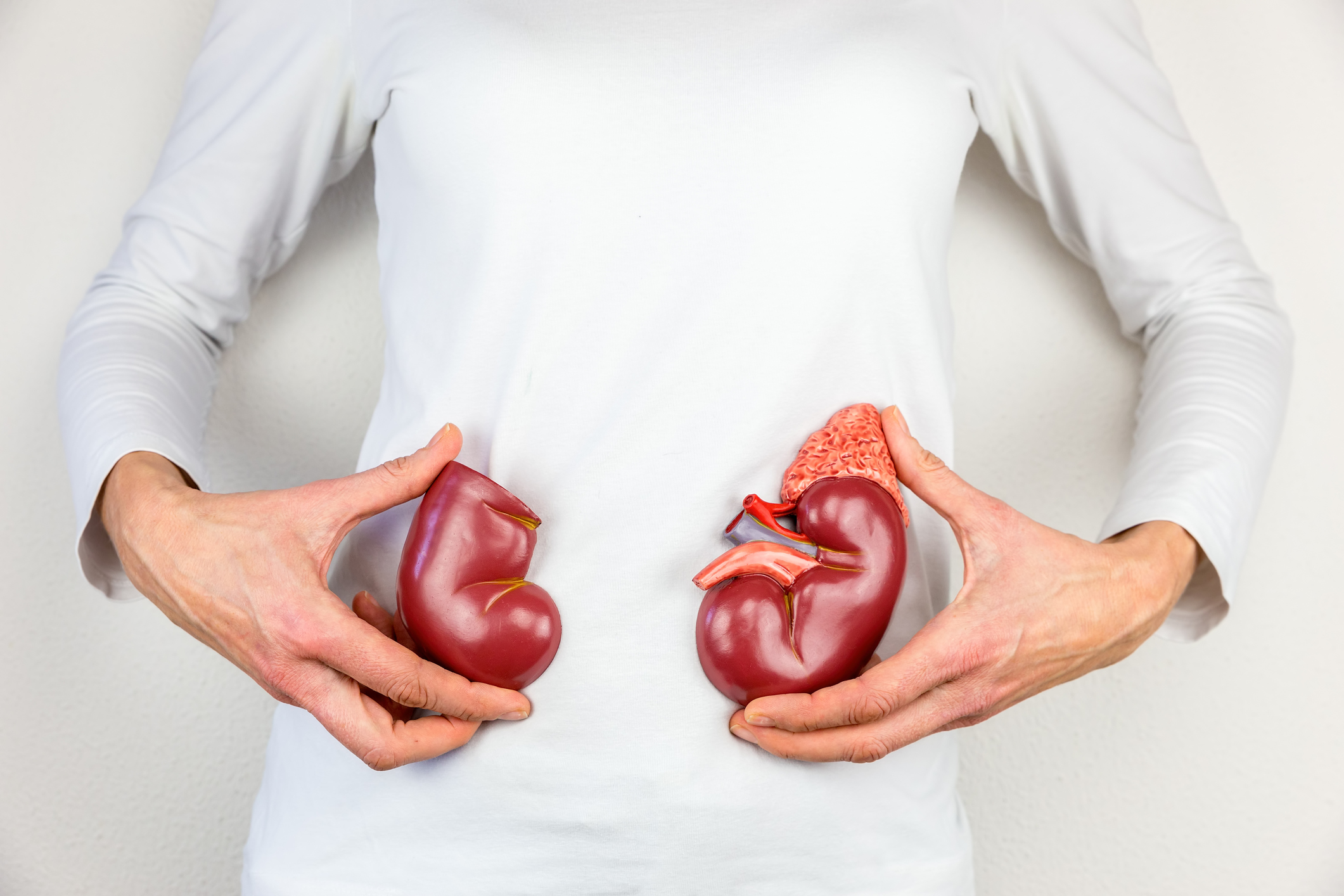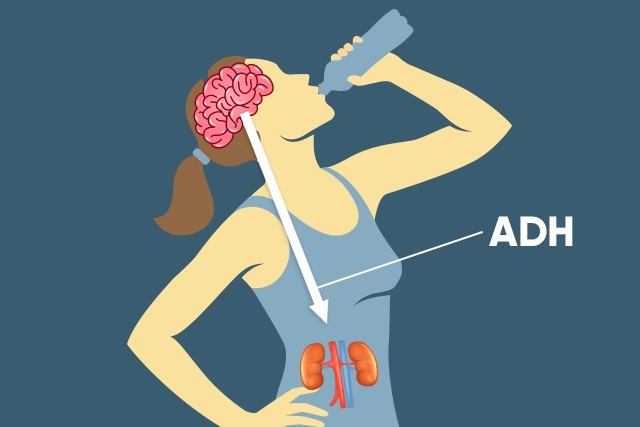Diabetes Insipidus is a rare form of diabetes which has nothing to do with high glucose in the blood. It is a type of condition which is identified with the increase in thirst and urination. It makes you extremely thirsty and makes large amounts of urine. This is the reason what makes you pee more in diabetes insipidus.
It is seen that one individual from every 25000 people suffers from diabetes insipidus in the general population and this is what makes it very rare in nature. It disrupts the normal routine life and causes bedwetting.
What Are The Types?
There are four types of diabetes insipidus, namely-
1. Central Diabetes Insipidus
This is the most common form caused due to any damage to the pituitary gland and hypothalamus. It hinders the production of ADH (Antidiuretic Hormone) in the body often as an outcome of any trauma, brain swelling, surgery, tumors and loss of blood supply.
2. Nephrogenic Diabetes Insipidus
In such a condition, the kidneys stop responding to the ADH produced in the body. It may be caused due to any blockage in the urinary tract, kidney diseases, high levels of calcium, low levels of potassium in the body.
3. Dipsogenic Diabetes Insipidus
It is often associated with mental illness and other medications which causes you to feel extremely thirsty. It is a result of dysfunction in the thirst mechanism and the person tends to drink excessive liquid. This leads to Dipsogenic diabetes insipidus.
4. Gestational Diabetes Insipidus
Gestational diabetes insipidus happens during pregnancy where the placenta destroys a mother’s ADH, making the kidneys less sensitive to the ADH. This condition is resolved after the gestation period.
What Are The Symptoms?

Diabetes insipidus has two main symptoms. Firstly, an individual may feel extremely thirsty at regular intervals, and secondly, urinating in enormous quantities. The urine excreted is in a pale diluted form. It is observed that a normal healthy individual urinates at around 3 quartz, but a person suffering from diabetes insipidus urinates up to 16 quartz a day.
Other symptoms that indicate diabetes insipidus are-
- Polydipsia
- Polyuria
- Dehydration
- Irritability
- Lethargy
- Muscle Pain
- Weakness
How Is It Diagnosed?

There are certain symptoms other than polydipsia and polyuria, They distinguish diabetes insipidus and help in the diagnosis of the disease. Certain tests would help in determining this condition such as urinalysis (demonstrates a dilute clear liquid with specific gravity), urine with low osmotic concentration, and low electrolyte levels. A series of blood and urine tests are performed, and the quantity of sodium is measured in the blood and urine with the help of tests.
Other than this, a fluid deprivation test is helpful in determining the exact cause of the disease, whether it is due to lack of ADH produced or a defect in kidney’s response to the ADH produced. The test measures the urine output, and its composition also determines the reason for sudden weight loss and low energy levels.
How Is It Treated?

Diabetes insipidus is treated by maintaining the amount of water content in the body and reducing your constant need for the bathroom. Your doctor may recommend a specific amount of fluid and regulate the intake of water per day. However, it depends on the severity of your condition.
- Hormonal Treatment
This is the most common type of treatment which involves intake of a synthetic hormone called desmopressin(DDAVP) through a pill, nasal spray, and injections as a substitute of ADH. During the treatment through desmopressin, it is important to regulate the water intake and patients are advised to drink water only when they are thirsty.
- Drugs & Medication
Drugs and medication are helpful in the case of nephrogenic diabetes insipidus. There are certain other drugs taken with desmopressin such as diuretics, either alone or with aspirin or ibuprofen. When these medications are taken it is important to regulate your water intake.
- Treating Underlying Conditions
There can be many underlying causes for this condition. It can be damage or tumor in the pituitary gland which disturbs the functioning of the gland. Your doctor would determine the reason first, and then he would arrive at conclusion whether diabetes insipidus is needed to be treated or not.
- Lifestyle And Dietary Modifications
Your lifestyle and diet also play an important role in treating this condition. It is important to prevent dehydration and regulate the water content in your body to cure the disease. Your doctor would suggest you the quantity of water to be taken per day to maintain a healthy balance.
Consequences Determining Diabetes Insipidus

Diabetes insipidus is related to a substance called antidiuretic hormone (ADH) which is stored in the pituitary gland. It is produced in a part of the brain called the hypothalamus. ADH is responsible for sending signals to the kidney to hold on to water which makes your urine more concentrated.
When you are thirsty or dehydrated, it indicates a rise in the ADH levels. This process signals the kidneys to absorb water, and the urine comes in a concentrated form. But when the kidneys stop absorbing enough water and the urine that comes out is in more diluted form, then the normal then this is an indication of a fall in the ADH levels.
The consistent fall in the ADH levels is termed as Central Diabetes Insipidus. Sometimes your brain produces enough ADH but your kidneys stop responding to it, that condition is called as nephrogenic diabetes insipidus. In both the conditions, the result is the same. Your kidneys stop responding and release a pale liquid in diluted form even if you are dehydrated.
Differences Between Diabetes Insipidus And Diabetes Mellitus
There is a difference between the above two categories of diabetes. The following points would cover the main differences between them.
- Diabetes mellitus is a condition which affects the pancreas, while diabetes insipidus is a hypothalamic disorder.
- Diabetes mellitus is caused due to lack of insulin in the body cells and diabetes insipidus is caused due to hyposecretion of ADH(Antidiuretic hormone or Vasopressin).
- Diabetes mellitus causes the rise in the level of glucose in the blood. While on the other hand, diabetes insipidus has nothing to do with rising blood sugar, neither it indicates such a symptom.
- In diabetes mellitus, it is seen that the excess glucose is excreted with urine, but this is not the case with diabetes insipidus as the sugar is not excreted in urine.
- In diabetes mellitus, the urine excreted is in excess and it is of normal concentration; while the case with diabetes insipidus is slightly different, urine excreted is in a diluted form and the quantity is enormous.
- Diabetes mellitus results in polyphagia(excessive eating due to extreme hunger) while diabetes insipidus does not attract the condition of extreme hunger.
- Diabetes mellitus results in the rising cholesterol level of the blood, while diabetes insipidus does not raise the cholesterol levels.
- Ketone bodies are a type of antibodies that weaken the immune system of the patient, and it is often seen in the patients with diabetes mellitus. Diabetes insipidus is not seen with ketones in the blood, and it has nothing to do with ketosis.

